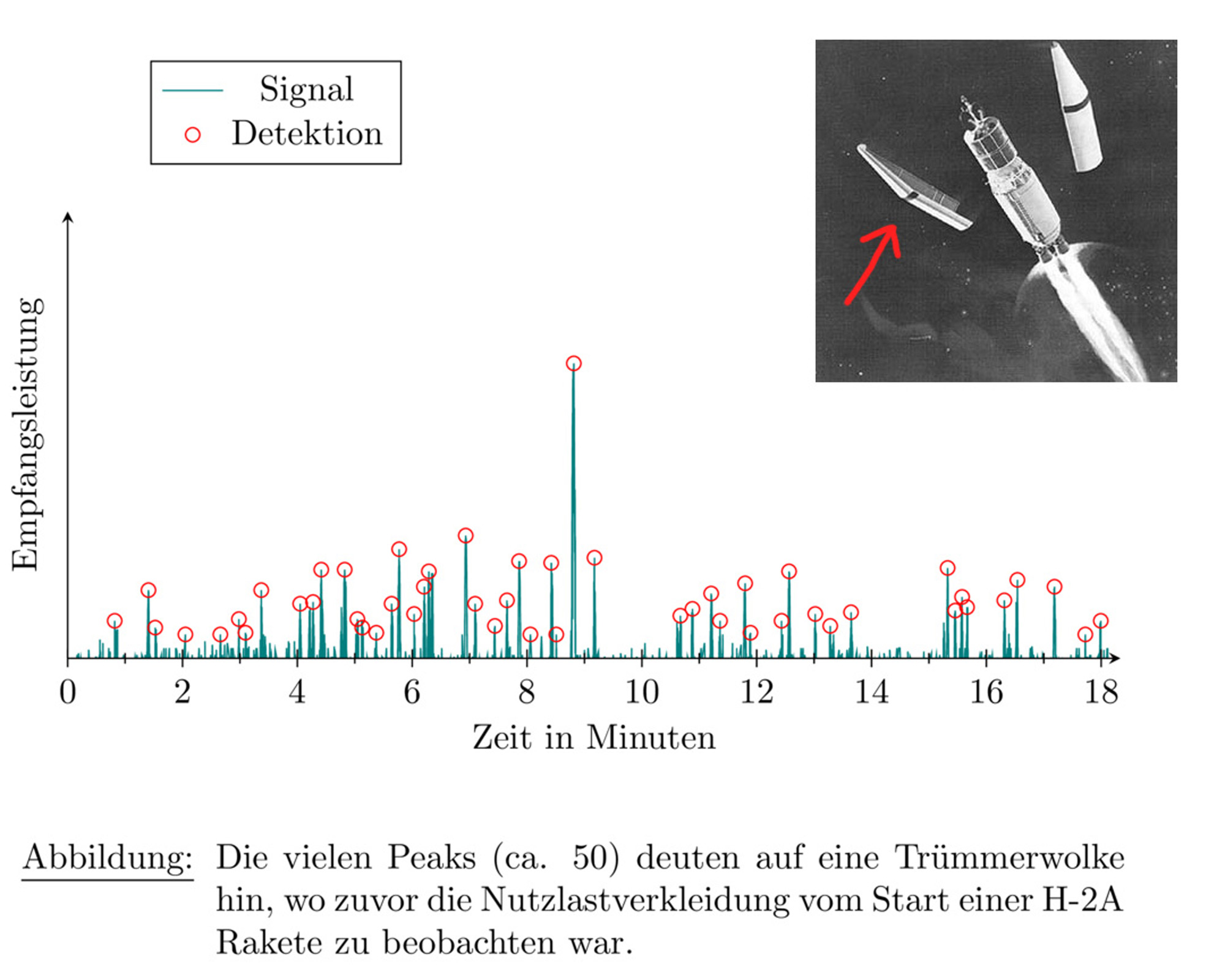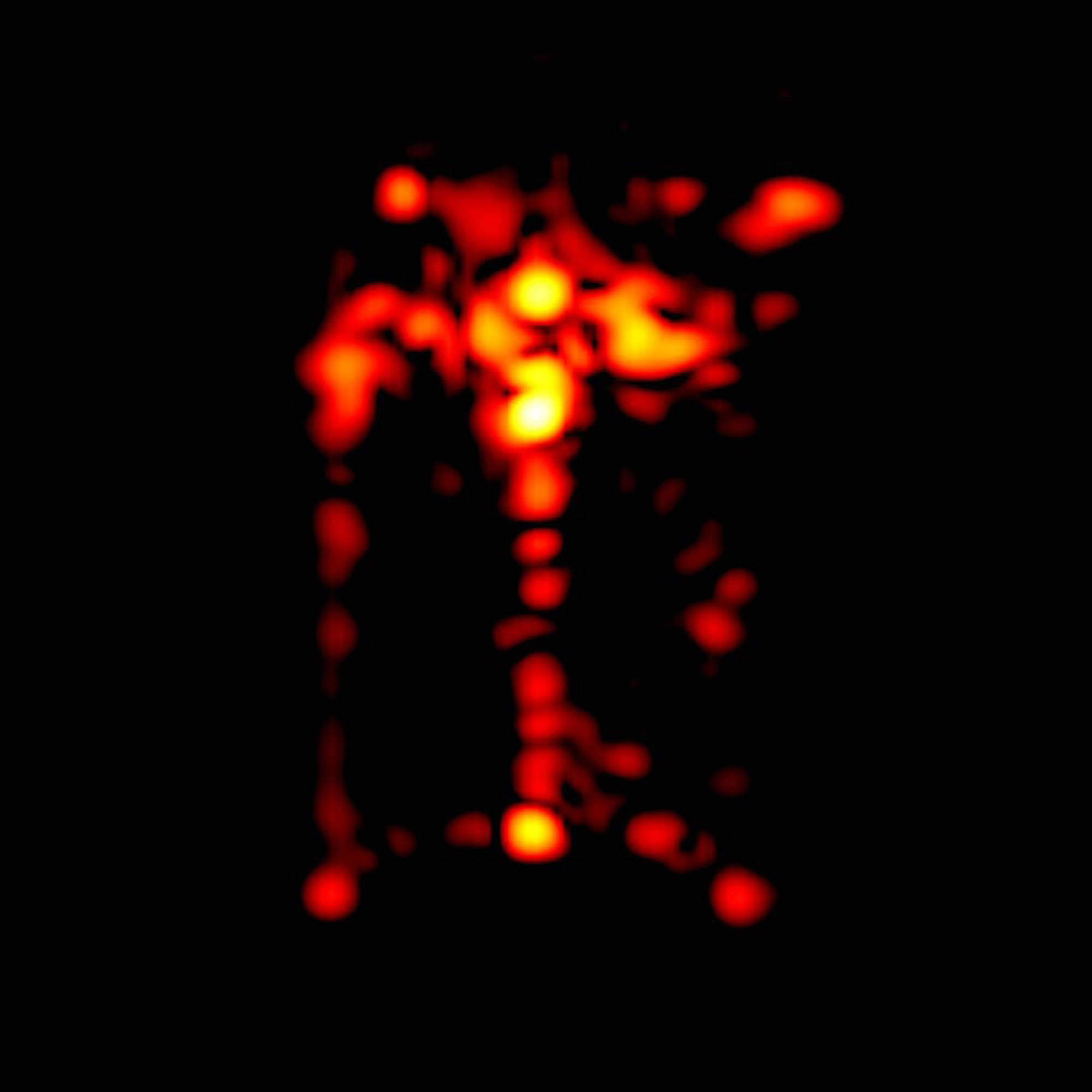The search for the needle in the haystack


What happened when a cylinder half fragmented in orbit – was the object completely destroyed? An unusual task that the TIRA target tracking and imaging radar was able to master well.
Man has left his mark on orbit: The extent of space debris is steadily increasing. Explosions of rocket upper stages, satellite launches and uncontrolled collisions of space debris further increase the number of particles whirling around. This was also the case on July 3, 2022: At shortly before six o‘clock CET, the cylinder half of a shell that protects the payload from external influences during rocket launch and that is jettisoned before the satellite is released – the H-2A Payload Fairing (43674) – fragmented. Following its fragmentation, numerous questions arose: are there other pieces of debris drifting through orbit around the original object? Is there anything left of the original object, or has it been completely destroyed?
Using two different radar settings to reach the target
The German Armed Forces Space Command with its departmental Space Situation Center commissioned Fraunhofer FHR to answer these questions, using TIRA. This was a rather unusual task for TIRA and the supervising team because the system is not designed to search large parts of the sky. The outcome was uncertain. To counter it, two different settings of the radar were used. First was »staring mode«: in which the antenna is pointed at a specific part of the sky and moved only to compensate for the Earth‘s rotation. Earlier data provided clues as to which section to target and when debris would need to pass this observed section. To be sure not to miss the passing of the pieces, the staff started the observation with the target-tracking radar several minutes before the expected time and did not end it until another 18 minutes later. In total, they received 50 detections – a particularly strong echo occurred four minutes after the expected contact.
In order to classify this strong detection more precisely, the employees took up »tracking« in a second measurement with TIRA: Instead of looking at a constant section of the sky as before, they tracked the object and also imaged it with the target imaging radar. But how to find the object again? Since the echo occurred four minutes after the expected contact, the team calculated: the object delays by 25 seconds per day. In this way, the researchers extrapolated its reappearance and were able to find it again. The result: the object rotates very fast, at about 20 degrees per second. It also had a similar geometry to the cylinder half of the payload fairing. The researchers were able to successfully identify the object in the debris cloud – in other words, find the needle in the haystack.